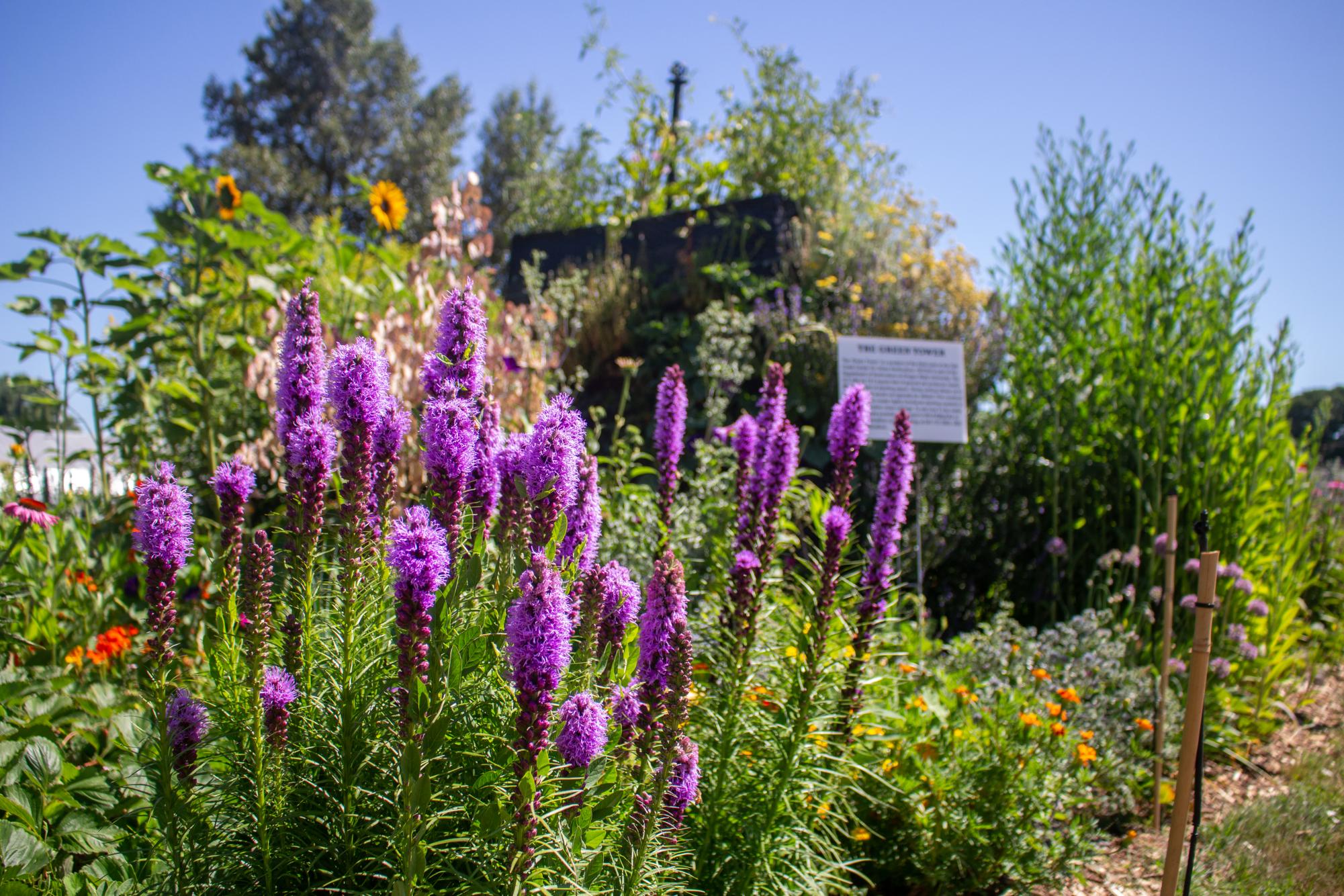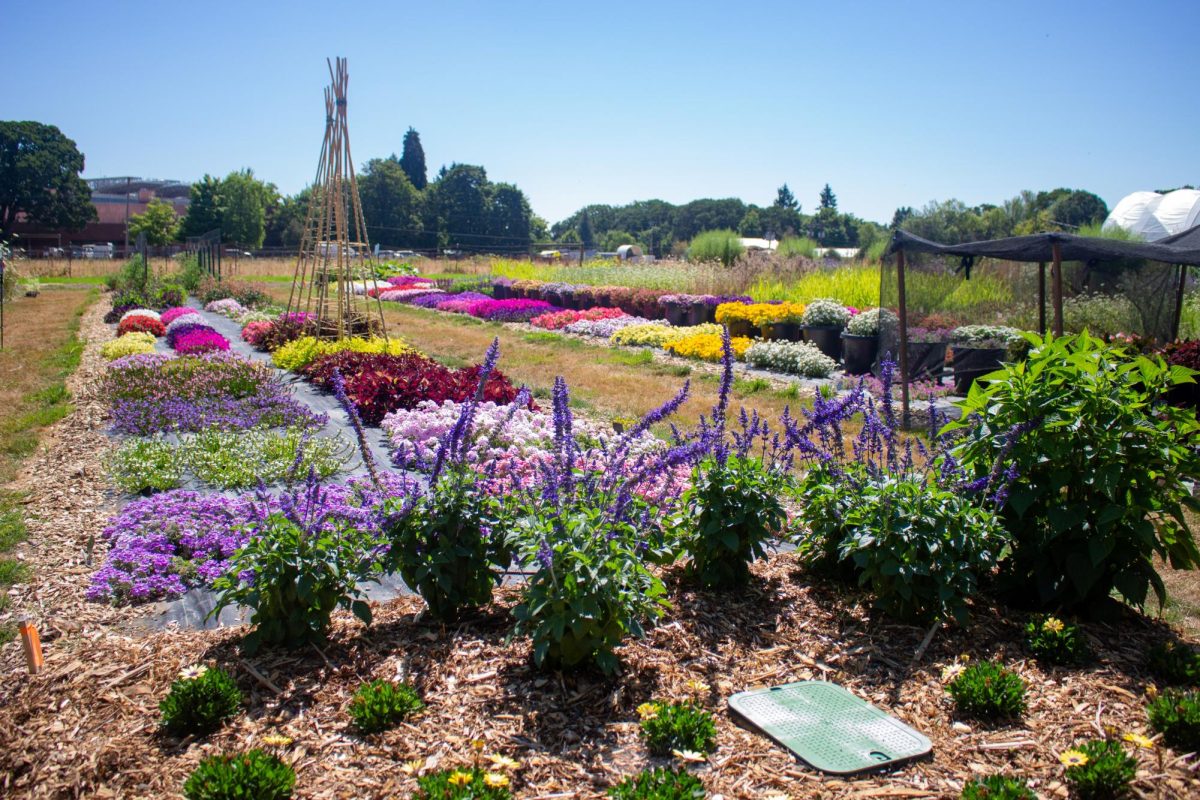The Oak Creek Center for Urban Horticulture was abuzz with activity as its annual open house took place on July 13, giving attendees a chance to learn more about horticulture.
The center is located on the edge of the Oregon State University campus on SW 35th Street and serves as a hub for horticulture research.
There were many different trials and projects on display, one of which is the dry farming research, run by Lucas Nebert, a research associate in horticulture. This year, they are working on a new project called the African Farming Research Initiative, where African crops from the national repository are planted in the garden.
“We have sorghum, millets, sesame, cowpeas, and also some melons,” Nebert said.
Along the path, a small alcove hosts a section dedicated to bees with the focus of informing guests about the two big research projects currently happening with bees at OSU.
There is the Bee Atlas, which is described by their website as a way to create a comprehensive and publicly accessible inventory of the state’s native bees and their biodiversity while educating Oregonians on the state’s bee biodiversity and conducting an ongoing survey about native bee populations to assess their health.
“Right now, we think that there’s about 800 species of bees in Oregon,” said Cassidy Carpenter, administrative assistant on the project. “There are also some bee species that are very physically identical and the only way we can tell the difference is through DNA barcoding.”
According to the National Library of Medicine, DNA barcoding is a process where one or more standardized short DNA regions are used for identification. According to Carly Rohn, a research assistant on the project, the bees are sent over to a lab in Canada and then analyzed to see if they are a different species.
That is only one half of the section on bees however, as Alec Sautter, a research assistant, explained that one of the projects that they are currently working on is a project that investigates the effects of a specific cholesterol and how that affects their growth. This is done by collecting samples of cholesterol and measuring how much carbon-13 is in them.
“Instead of carbon-12, we have carbon-13 so we will be able to see how much of it is actually in (the bees),” Sautter said.
Some of the plots were used for research while others offered a community garden. One such example of this is the Reciprocity Garden, a community garden run by Charlotte Epps, the garden’s co-creator. The social justice based community garden has the goal of uplifting and empowering students of color and LGBTQ+ students.
“What you’ll see when you walk into the garden itself first is the solidarity circle. So it’s kind of a circle of different types of flowers from different cultural backgrounds that come together and make a beautiful, diverse, really awesome experience,” Epps said.
One of the other experiments that you might notice when walking through the open house is the annual flower trials run by Nick Cavagnaro. This is where major plant producers send in their plants to get them evaluated before they get sold to the public.
“Each April they send me around 50 different plants, 12 of each, so I grow 600 plants in a greenhouse until mid-May when I plant them out in the trial beds,” Cavagnaro said. “Once a month I evaluate the plants, for such things as size, number of flowers, fragrance, etc. When the season is done in September I send them the evaluation and photos.”
While exploring the center, you are likely to run into horticulture students, among them Emily Bonazzola, a student worker who has been a part of the center since the pandemic.
“I like to see the plants go from seeds in the greenhouse to graduating to the outdoor sheltered area, and then finally be put out into the field and just do their whole life,” Bonazzola said. “Whether you are a horticulture major or not, you’re always welcome to come and just hang out!”



















































































![Newspaper clipping from February 25, 1970 in the Daily Barometer showing an article written by Bob Allen, past Barometer Editor. This article was written to spotlight both the student body’s lack of participation with student government at the time in conjunction with their class representatives response. [It’s important to note ASOSU was not structured identically to today’s standards, likely having a president on behalf of each class work together as one entity as opposed to one president representing all classes.]](https://dailybaro.orangemedianetwork.com/wp-content/uploads/2025/03/Screenshot-2025-03-12-1.00.42-PM-e1741811160853.png)


























